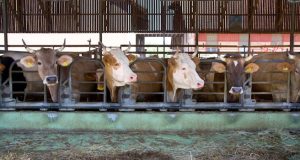Regenerative Agriculture: A Path to Sustainable Farming
The global food system is at a crossroads. With a projected population of 9 billion by 2050, the demand for food will only continue to grow. At the same time, the consequences of industrial agriculture are becoming increasingly apparent, from soil degradation to water pollution to greenhouse gas emissions. It’s clear that we need a more sustainable approach to farming. This is where regenerative agriculture comes in – a method that not only produces food, but also regenerates the health of our soil and ecosystems. In this article, we’ll delve into what regenerative agriculture is, why it’s important, and the potential it holds for transforming our food system.
What is Regenerative Agriculture?
Regenerative agriculture is a holistic approach to farming that focuses on revitalizing the natural resources that are essential for food production. Its principles are centered around building and maintaining healthy soil, promoting biodiversity, and minimizing the use of external inputs such as chemicals and fossil fuels. It goes beyond sustainable farming practices by actually regenerating and repairing the damage done by industrial agriculture over the years.
The Importance of Soil Health
Soil health is at the core of regenerative agriculture. For too long, we have treated soil as a mere medium to grow crops, ignoring its complex and vital role in sustaining life. Healthy soil is teeming with microorganisms, which help to break down organic matter and provide plants with essential nutrients. Industrial agriculture practices, such as excessive tilling and the use of synthetic fertilizers and pesticides, have depleted the soil of these microorganisms, leading to soil erosion, loss of topsoil, and reduced fertility.
Regenerative agriculture practices, such as cover cropping, crop rotation, and the use of compost and natural fertilizers, help to restore soil health by replenishing nutrients, increasing microbial activity, and promoting the growth of beneficial microorganisms. This not only leads to healthier plants, but also helps to mitigate climate change by sequestering carbon in the soil.
Promoting Biodiversity
Mono-cropping, or the practice of growing a single crop in a large area of land, is a common feature of industrial agriculture. However, this practice is known to have negative impacts on both the environment and farmers’ livelihoods. It leads to the depletion of nutrients in the soil, increased vulnerability to pests and diseases, and a dependence on costly external inputs.
In contrast, regenerative agriculture encourages the use of diverse cropping systems, including polycultures and crop rotations. This promotes biodiversity, making the farm more resilient to climate fluctuations and reducing the need for synthetic inputs. For example, a diverse mix of plants can help to naturally control pests and diseases, reducing the need for harmful pesticides.
The Potential of Regenerative Agriculture
While regenerative agriculture is still a relatively new concept, it has already shown promising results in improving soil health, reducing carbon emissions, and increasing farm profitability. A study conducted by the Rodale Institute found that regenerative farming practices could sequester more than 100% of current global annual carbon emissions, effectively reversing climate change. And according to a report by the FAO, regenerative agriculture practices can increase crop yields by up to 79% while reducing production costs.
Moreover, regenerative agriculture has the potential to address some of the biggest challenges facing the global food system. It can help to improve the resiliency of farms to extreme weather events, reduce food waste, and create more sustainable and equitable food systems for all.
Challenges and Obstacles to Implementation
While the benefits of regenerative agriculture are clear, there are several challenges and obstacles to its widespread adoption. One of the biggest barriers is the dominance of conventional industrial agriculture practices, which are deeply ingrained in our global food system. Many farmers are also hesitant to adopt new practices that may require significant changes to their current systems.
Furthermore, transitioning to regenerative agriculture may require initial investments in infrastructure and training, which can be a challenge for small-scale farmers with limited resources. Policies and financial incentives that support regenerative agriculture could go a long way in overcoming these barriers and supporting farmers in making the transition.
The Time for Change is Now
The challenges facing our food system are complex and urgent, and there is no one-size-fits-all solution. However, regenerative agriculture offers a promising path towards a more sustainable, equitable, and resilient food system. By focusing on building healthy soils, promoting biodiversity, and reducing reliance on external inputs, regenerative agriculture has the potential to transform our food system for the better. With the right support and incentives, we can move towards a more regenerative way of farming and secure the future of our food and planet.
Sources:
https://www.nationalgeographic.com/environment/future-of-food/regenerative-agriculture-feeding-the-future/#close
https://rodaleinstitute.org/new-study-regenerative-agriculture-can-reverse-climate-change/
http://www.fao.org/3/i9037en/I9037EN.pdf











